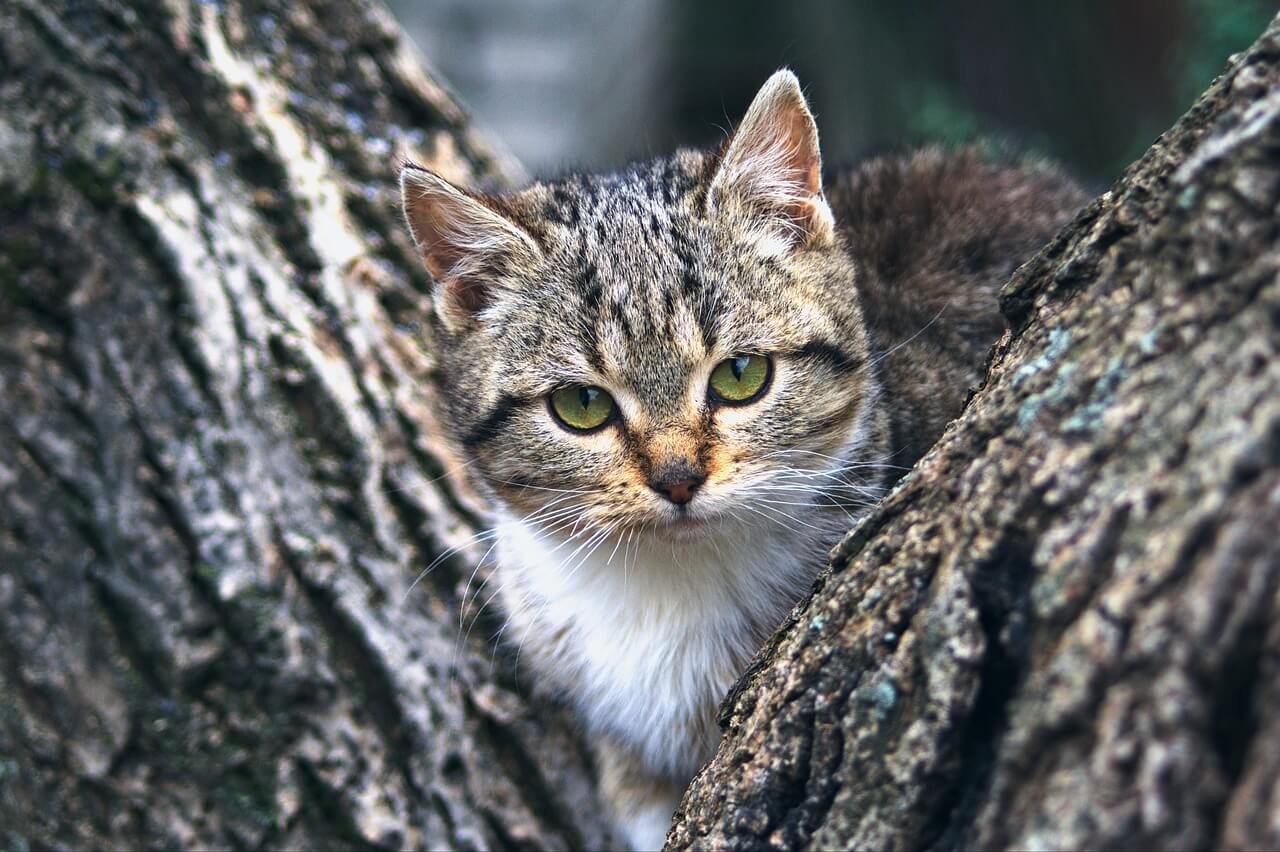How to Cat-Proof Your House: A Complete Guide for Pet Owners
Welcoming a cat into your home is a joyous occasion, but it also comes with responsibilities. Cats are naturally curious creatures, and their playful antics can sometimes lead them into trouble—or worse, danger. From knocking over fragile items to chewing on electrical cords, cats have a knack for finding mischief in even the most mundane household objects. To ensure both your safety and theirs, it’s essential to cat-proof your house. In this guide, we’ll walk you through practical tips and strategies to create a safe, feline-friendly environment that minimizes risks while maximizing comfort.
Protecting Your Cat from Dangerous Spaces
Certain areas of your home pose potential hazards to your feline friend. By identifying and addressing these spaces, you can prevent accidents and injuries. Here’s how to secure hazardous areas effectively:
Block Off Small Spaces :
Use childproof gates or barriers to keep cats out of tight spots like behind appliances or under furniture.Secure Windows and Balconies :
Install window screens or netting to prevent falls from high places.Lock Cabinets Containing Chemicals :
Ensure cleaning supplies, medications, and other toxic substances are stored securely.Cover Electrical Outlets :
Use outlet covers to prevent curious paws from accessing live electricity.Anchor Heavy Furniture :
Secure bookshelves, TVs, and other heavy items to walls to avoid tipping accidents.
By taking these precautions, you can significantly reduce the risk of accidents in your home. Remember, prevention is always better than dealing with an emergency later.
Preventing Damage to Belongings—and Your Cat
Cats love to explore, and their curiosity often leads them to interact with household items in ways you might not anticipate. Protecting both your belongings and your pet requires some creative solutions. Here’s what you need to do:
Store Fragile Decorations Safely :
Keep breakable ornaments, vases, or collectibles out of reach or behind glass doors.Hide Electrical Cords :
Use cord organizers or tubing to conceal wires and discourage chewing.Remove Toxic Plants :
Replace poisonous plants like lilies or pothos with cat-safe alternatives.Invest in Scratch-Resistant Furniture :
Choose durable materials or apply protective covers to minimize scratching damage.Use Non-Slip Mats Under Rugs :
Prevent slipping incidents by securing rugs firmly to the floor.
These steps will help maintain harmony between your living space and your furry companion. With a little effort, you can enjoy peace of mind knowing your home is safer for everyone.
Check this guide 👉How to Cat-Proof Your Balcony: Best 7 Expert Tips!
Check this guide 👉How to Bond with Your Cat: Best 7 Expert Tips!

Common Household Hazards | Solutions for Cat-Proofing |
|---|---|
Open windows and balconies | Install sturdy screens or safety nets |
Exposed electrical cords | Use cord sleeves or hide them completely |
Toxic foods (e.g., chocolate) | Store securely in sealed containers |
Sharp objects (knives, scissors) | Keep in locked drawers or cabinets |
Fragile decorations within reach | Place higher up or store safely away |
Designating Areas Where Your Cat Can Thrive
Providing designated play zones not only keeps your cat entertained but also reduces the likelihood of unwanted behaviors elsewhere in the house. Here’s how to create safe and stimulating environments:
Set Up a Cat Tree or Perch :
Offer vertical spaces where your cat can climb, jump, and observe their surroundings.Include Interactive Toys :
Rotate toys regularly to keep your cat engaged and mentally stimulated.Add Scratching Posts :
Place posts near favorite lounging spots to redirect destructive scratching habits.Create Cozy Nooks :
Provide soft beds or enclosed spaces where your cat can retreat and relax.Incorporate Window Views :
Position perches near windows so your cat can watch birds or outdoor activity safely.
By designing thoughtful play areas, you encourage positive behaviors while keeping your home intact. It’s a win-win for both you and your cat!
Ensuring Your Cat’s Nutrition and Hydration Are Secure
Food and water management is crucial for maintaining your cat’s health and preventing accidents. With a few adjustments, you can make mealtime safer and more enjoyable. Here’s how:
Store Dry Food in Sealed Containers :
Prevent pests and spoilage by using airtight storage bins.Keep Human Food Out of Reach :
Avoid leaving snacks or leftovers accessible to curious cats.Provide Fresh Water Daily :
Clean bowls regularly to prevent bacterial growth.Avoid Elevated Feeding Stations Near Edges :
Place food and water dishes on stable surfaces to avoid spills.Supervise Treat Time :
Monitor treat consumption to ensure your cat doesn’t overindulge.
Taking these steps ensures your cat stays nourished and hydrated without unnecessary risks. Proper food and water management contributes to long-term well-being.
Stopping Your Cat from Bolting Outdoors
Cats are naturally curious and may attempt to escape through open doors or windows. To keep your cat safe indoors, it’s essential to take proactive measures that minimize the risk of escapes. Here are some strategies to consider:
Install Door Guards or Alarms :
Use motion-activated alarms near exits to alert you when a door is opened.Teach Your Cat to Avoid Doors :
Reward your cat with treats for staying away from entryways during high-traffic times.Create a “Decoy” Exit Point :
Designate a specific area, like a screened porch, where your cat can safely experience the outdoors.Use Window Perches Instead of Open Windows :
Allow your cat to enjoy fresh air without the risk of jumping out.Supervise Outdoor Time :
If you let your cat outside, always accompany them or use a harness and leash.
By implementing these precautions, you can reduce the likelihood of accidental escapes and ensure your cat remains safe indoors. Consistency and vigilance are key to keeping your feline friend secure.
Keeping Tiny Temptations Out of Reach
Cats are notorious for investigating small objects, which can pose choking hazards or lead to intestinal blockages if swallowed. Taking steps to manage these risks is crucial for their safety. Here’s how to address this issue:
Pick Up Loose Items Daily :
Gather small objects like rubber bands, coins, or hair ties before your cat finds them.Store Craft Supplies Safely :
Keep items like needles, thread, and beads in sealed containers or drawers.Check Under Furniture Regularly :
Retrieve any hidden items that may have rolled out of sight.Avoid Stringy Toys Without Supervision :
Strings, ribbons, and yarn should only be used under close supervision.Invest in Cat-Safe Toys :
Choose toys specifically designed to withstand chewing and biting.
By eliminating access to small, dangerous items, you protect your cat from potential harm. A tidy home isn’t just aesthetically pleasing—it’s also safer for your curious companion.
Creating a Calm Environment for Your Cat
Stress can negatively impact your cat’s health and behavior, so it’s important to identify and minimize triggers in your home. A peaceful environment supports their emotional well-being and strengthens your bond. Here’s how to achieve this:
Maintain a Consistent Routine :
Feed, play, and clean at the same times each day to provide stability.Provide Hiding Spots :
Offer cozy retreats like covered beds or cardboard boxes where your cat can decompress.Limit Loud Noises :
Use white noise machines or soft music to drown out sudden sounds like vacuum cleaners.Introduce New Pets Gradually :
Allow time for slow introductions to avoid overwhelming your resident cat.Use Pheromone Diffusers :
Products like Feliway mimic calming pheromones and help reduce anxiety.
A stress-free home fosters happiness and confidence in your cat. By addressing potential triggers, you create an atmosphere where they feel secure and loved. After all, a relaxed cat is a happy cat!
Frequently Asked Questions About Cat-Proofing Your Home
What are the most dangerous household items for cats?
Toxic plants, small choking hazards, and exposed electrical cords top the list.
How can I stop my cat from jumping onto counters?
Use deterrent sprays or double-sided tape to make surfaces less appealing.
Is it safe to let my cat roam freely indoors?
Yes, as long as the space is properly cat-proofed and supervised.
Can I use essential oils to repel my cat from certain areas?
No, many essential oils are toxic to cats; opt for cat-safe deterrents instead.
How do I teach my cat to stay away from specific rooms?
Use baby gates, motion-activated deterrents, or training techniques to redirect behavior.
Final Thoughts: Building a Happy and Safe Home for Your Cat
Cat-proofing your house isn’t just about protecting your belongings—it’s about ensuring your feline friend enjoys a safe, enriching environment. From securing hazardous areas to creating dedicated play zones, every step you take contributes to their well-being and happiness. While the process may require time and effort, the rewards are immeasurable: a harmonious home where both you and your cat can thrive. So roll up your sleeves, implement these tips, and embrace the joy of sharing your life with a curious and loving companion. After all, a happy cat makes for a happy home!
Canned Pumpkin for Cat Diarrhea: Best 7 Expert Tips! Natural remedy to firm stools, soothe upset bellies, and support gut health safely.
Can a Cat Give You Scabies? Best 7 Expert Tips! Discover the truth about feline mites, human skin risks, and how to protect yourself—without panic.
Cat Flea vs Human Flea: Best 7 Expert Tips! Discover the truth about bites, species, and how to eliminate infestations for good.
Weird Cat Behaviors: Best 7 Expert Tips! Discover why cats do strange things—and how to understand, not punish, their instincts for a happier home.





